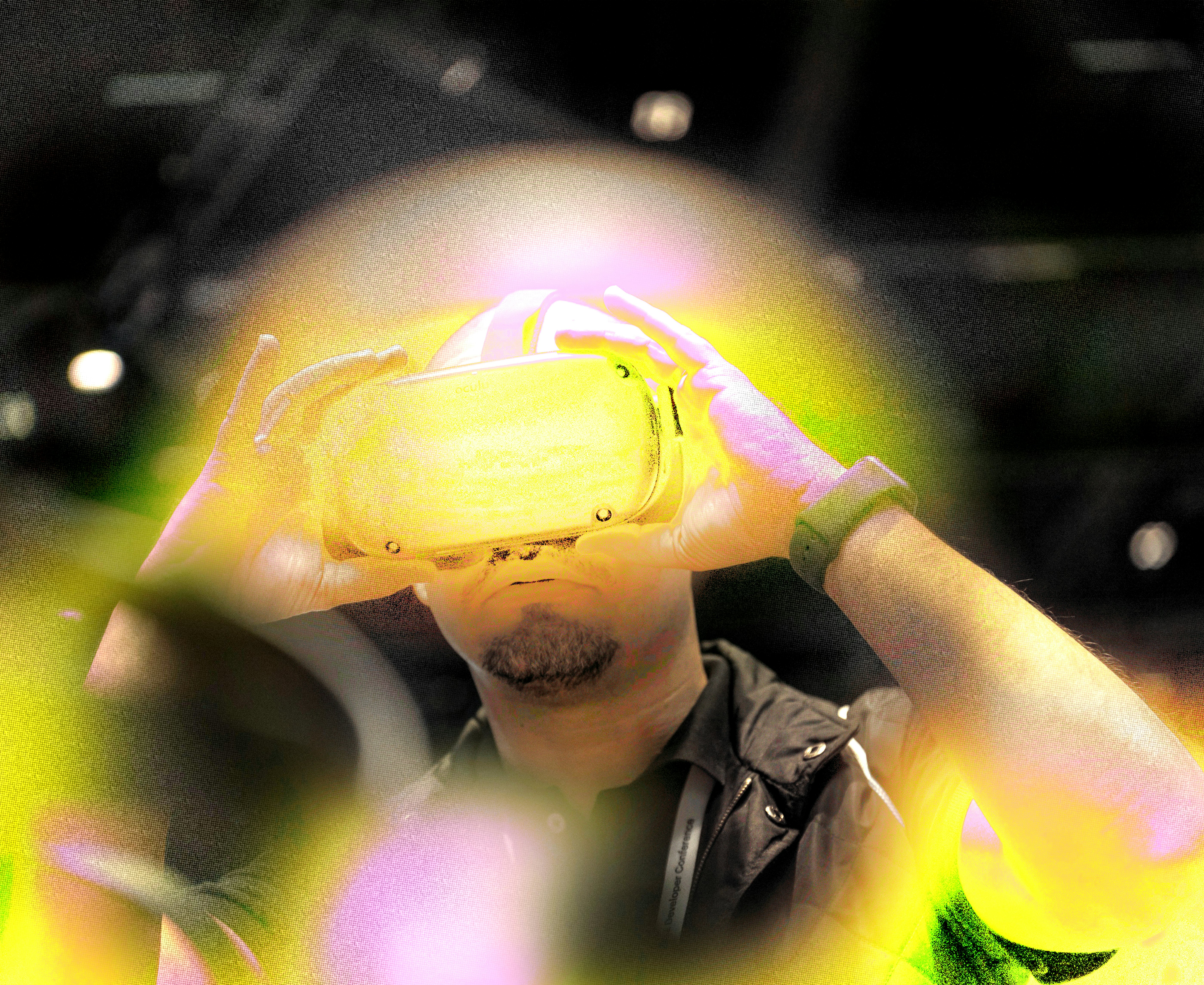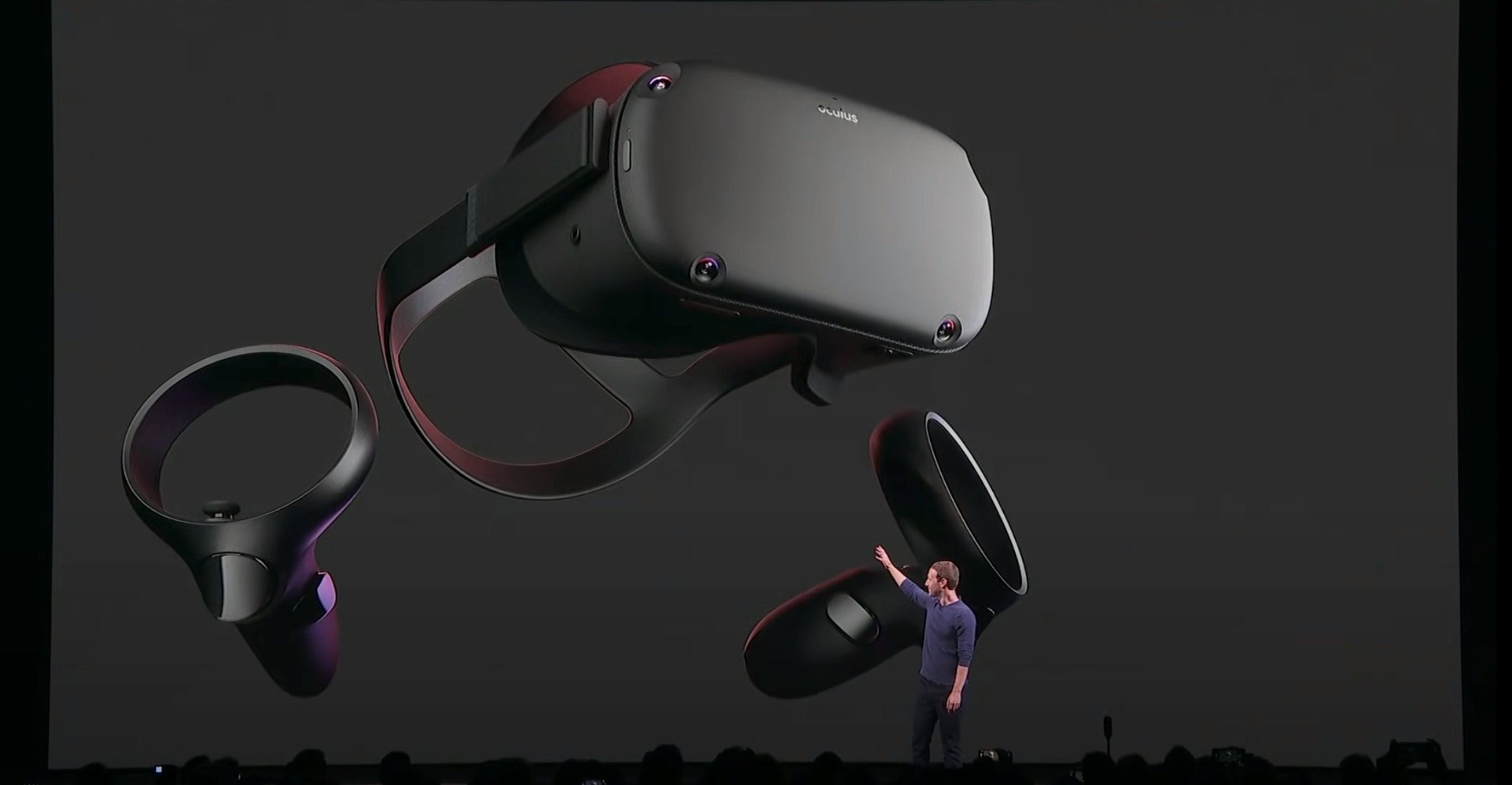
Whether Meta is right that the next frontier for computers (and connection) lies somewhere in augmented and mixed reality experiences you wear on your face — the Vision Pro is proof enough that Apple shares its line of thinking.
To Meta’s credit, you can trace today’s growing mixed reality headsets back to the original Oculus Quest, released five years ago in 2019. The Quest was Meta’s (then Facebook) first standalone (read: wireless) VR headset. Not needing a wired connection to a powerful gaming PC had a major upside: VR became more affordable.
But the real selling point to the Quest, and most of the headsets that followed it, was that it prioritized playing games first, and “the future of computing” second. The Quest made spatial, room-scale, video games accessible to the mainstream for the first time. It turns out that games, not spreadsheets, are the main form of content that’s keeping people interested in strapping screens to their faces in the long term — provided they have compelling VR games to play.
Project Santa Cruz

By the time the $399 Oculus Quest was officially announced at Meta’s Connect 5 conference, Mark Zuckerberg had already teased the headset, and the idea of a standalone virtual reality device in general, multiple times under the codename “Project Santa Cruz.” As he framed it then, the company’s idea was to create the ideal VR platform to hit Meta’s goal of getting 1 billion people in VR. The obstacles at the time? Both the PC-centric Oculus Rift and mobile-only Oculus Go headsets that Meta sold required additional hardware like a gaming PC or smartphone to work, respectively. They also compromised on ease of setup on one side and performance on the other.
The Quest was designed to be the best of both worlds, completely wire-free thanks to inside-out tracking, capable enough to play “Rift-quality” games, and able to track your hands and controllers The main innovation of the Quest was inside-out tracking, which, rather than relying on placing base stations or other trackers in the room around you, used four wide-angle cameras to determine the position of your head, headset, controllers, and hands in your space. Other PC VR headsets, like the Samsung Odyssey and the HP Reverb, used the same technique, but they needed a PC connection, which the Quest ditched entirely. Inside-out tracking wasn’t as powerful as separate trackers, but it was good enough and made the Quest entirely portable. Today, inside-out tracking is table stakes for a headset, and virtually every standalone VR or mixed reality headset uses it.
The main innovation of the Quest was inside-out tracking...
Paired with one 1,440 x 1,600 OLED screen per eye, a modified version of the Touch controllers the Rift already used, 4GB of RAM, and a Qualcomm Snapdragon chip that wouldn’t have been out of place on an Android phone from 2017, the Quest had everything it needed to play a compelling number of console and PC-quality games.
The original Quest didn’t have the visual fidelity of PC VR headsets, but most people picking it up for the first time wouldn’t know the difference. It was also heavier than the Oculus Rift, which felt counterintuitive for a device built for portability, but not unreasonable considering the Rift could offload processing power to a connected computer. Regardless of its first-generation shortcomings, the headset was a strong enough foundation for Meta to iterate on with the Quest 2, Quest Pro, and eventually Quest 3. The Quest line in general would go on to replace the company’s wired PC options as connectivity improved.
An Ever-Growing VR Game Library

The Quest launched with over 50 games, many of which were previously available on the technically far more powerful Rift. These were titles that have been released multiple times over, like Moss, Superhot VR, Beat Saber, and more, but also games people were guaranteed to like. Meta’s mission, much like Apple with the App Store, was to create a self-sustaining VR ecosystem. One with enough players and developers that there would always be more things to play and with enough financial incentive to make them. And it took an aggressive tactic to help.
Call it the Microsoft Xbox approach on a smaller scale. Meta has acquired multiple studios behind some of the most popular VR titles in the Quest Store, starting in November 2019 with Beat Games (Beat Saber), then Sanzaru Games (Asgard’s Wrath and its sequel) and Ready At Dawn (Lone Echo) in 2020, and BigBoxVR (Population: One) in 2021. All of this without concern that power was concentrating in one place. The first real scrutiny Meta received as it gobbled up studios was when it acquired Within, the creators of the Supernatural VR fitness app, in 2022. The FTC filed a complaint to block the acquisition that same year, but after a review, Meta was still able to absorb the company in 2023.
Meta has not always been the best steward of its first-party games — shutting down Echo VR, a beloved multiplayer VR game, was widely criticized, for example — but it’s undeniable that the money the company has spent getting games on its headsets has directly contributed to the success and ongoing growth of the Quest platform.
Games Make Everything Easier
Meta might not harp on its vision for “the metaverse” as aggressively as it once did, and VR has receded to the background as mixed reality, augmented reality, and AI have become the company’s focus, but either way, the original Quest was groundbreaking. While Apple has likely been thinking about augmented reality and the next phase of computing as long (if not longer) than Meta, it’s hard not to look at the Quest and see a direct line to the Vision Pro. Meta’s first standalone headset laid the groundwork for everything that came after.
The Quest’s function as a fun game console has been key to its staying power. Meta is slowly dropping support for the first Quest in its games, but titles that launched for the original headset are still playable on the Quest 2 and Quest 3. The Quest Pro was a misguided attempt to hard pivot the Quest platform towards productivity, but Meta seemingly saw the light with the Quest 3 and corrected course. A partnership with Microsoft to bring streaming Xbox games to the Quest has made it even more attractive for gaming, even if they’re in 2D and not VR.
Games get people coming back to headsets...
Other headset makers would be wise to follow Meta’s strategy. Would the $3,500 Apple Vision Pro be more popular if it focused on games? Probably not, but supporting Beat Saber wouldn’t have hurt. Games get people coming back to headsets, and even if a mixed reality headset could lead to bigger aspirations, selling a product that entertains people first, like the Oculus Quest did, is always going to be the safer bet.







